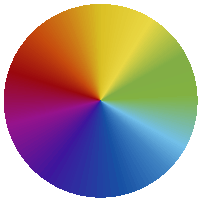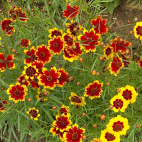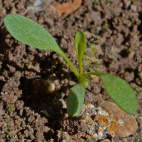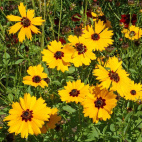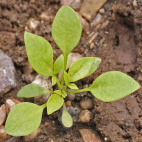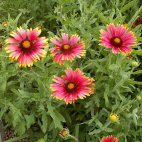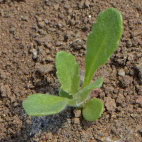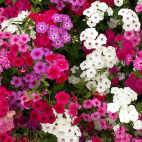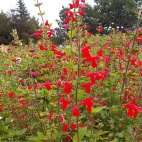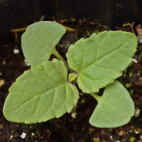Color
Availability
USDA Zone
Region
Type
Duration
Season
Germination
Soil
Sunlight
Height
Use
Narrow Your Search
Color
Availability
USDA Zone
Region
Type
Duration
Season
Germination
Soil
Sunlight
Height
Use
Wildflower Seeds - California Region
The wildflower species listed in the California Region are those that would grow well in the Central Valley as well as the coastal areas of Southern California. If you are in the mountains you might want to check out the Mountain Region, or if you are in the desert areas in the south, you'll want to look at the Dry West Region. The species of bulk wildflowers listed on this page are those that are either native here, or are annuals that grow well in this zone. There are hundreds of bulk California wildflower seeds to choose from, so please use the filters along the left side of the screen to narrow your search to match your soils, lighting, and any other attributes that you may want. If you are looking for something that is strictly native to your immediate area, you can check out the distribution map that is found on the detail pages of most of the species.
-
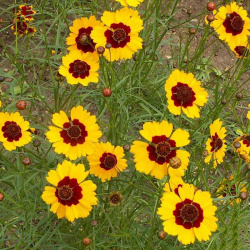 Dwarf Plains Coreopsis Seeds
Coreopsis tinctoria
This slender annual produces masses of yellow flowers with contrasting deep red centers. A popular choice of beginning gardeners because it is so easy to grow and produces a gratifying flower.Quick View$2.98 Pkt - $7.59 / Oz
Dwarf Plains Coreopsis Seeds
Coreopsis tinctoria
This slender annual produces masses of yellow flowers with contrasting deep red centers. A popular choice of beginning gardeners because it is so easy to grow and produces a gratifying flower.Quick View$2.98 Pkt - $7.59 / Oz -
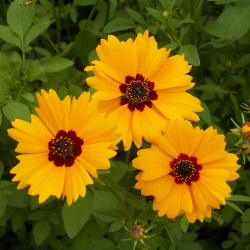 Golden Wave Tickseed Seeds
Coreopsis basalis
Native to the southern United States, this cheery, yellow wildflower will brighten any garden as an annual. This plant is also popular for butterfly gardens because it is showy, and it is a food source for pollinators.Quick View$2.98 Pkt - $9.35 / Oz
Golden Wave Tickseed Seeds
Coreopsis basalis
Native to the southern United States, this cheery, yellow wildflower will brighten any garden as an annual. This plant is also popular for butterfly gardens because it is showy, and it is a food source for pollinators.Quick View$2.98 Pkt - $9.35 / Oz -
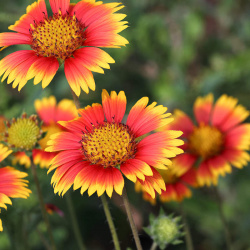 On Sale!
Indian Blanket Seeds
Gaillardia pulchella
Also known as Firewheel, this bi-colored variety comes in yellow, red, burgundy, and brown. It is a native wildflower of the Great Plains, and so is better equipped to handle heat and drought than other it's cousin, Blanket Flower. The easy-to-grow blooms provide color all season long.Quick Viewx
On Sale!
Indian Blanket Seeds
Gaillardia pulchella
Also known as Firewheel, this bi-colored variety comes in yellow, red, burgundy, and brown. It is a native wildflower of the Great Plains, and so is better equipped to handle heat and drought than other it's cousin, Blanket Flower. The easy-to-grow blooms provide color all season long.Quick ViewxIndian Blanket Seeds
Gaillardia pulchella
Also known as Firewheel, this bi-colored variety comes in yellow, red, burgundy, and brown. It is a native wildflower of the Great Plains, and so is better equipped to handle heat and drought than other it's cousin, Blanket Flower. The easy-to-grow blooms provide color all season long.
$3.48 Pkt - $7.92 / Oz -
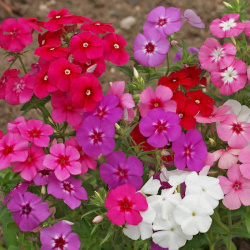 On Sale!
Annual Phlox Seed Mix
Phlox drummondii
Bearing clusters of lovely, fragrant flowers, this popular mix blooms in pink, red, rose, purple, and white. This mix is most often planted en masse so that the variegated colors can be more fully seen. This annual is very easy to grow and will attract a variety of pollinators to your garden.Quick Viewx
On Sale!
Annual Phlox Seed Mix
Phlox drummondii
Bearing clusters of lovely, fragrant flowers, this popular mix blooms in pink, red, rose, purple, and white. This mix is most often planted en masse so that the variegated colors can be more fully seen. This annual is very easy to grow and will attract a variety of pollinators to your garden.Quick ViewxAnnual Phlox Seed Mix
Phlox drummondii
Bearing clusters of lovely, fragrant flowers, this popular mix blooms in pink, red, rose, purple, and white. This mix is most often planted en masse so that the variegated colors can be more fully seen. This annual is very easy to grow and will attract a variety of pollinators to your garden.
$3.25 Pkt - $10.04 / Oz -
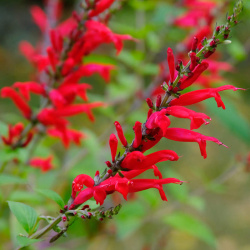 Scarlet Sage Seeds
Salvia coccinea
Ablaze with color, these crimson spikes come from the southern US, but can be grown as an annual in most areas. The hummingbirds love these red tubular flowers, and will be zinging through your garden with delight!Quick View$3.25 Pkt - $11.03 / Oz
Scarlet Sage Seeds
Salvia coccinea
Ablaze with color, these crimson spikes come from the southern US, but can be grown as an annual in most areas. The hummingbirds love these red tubular flowers, and will be zinging through your garden with delight!Quick View$3.25 Pkt - $11.03 / Oz
The wildflower species listed in the California Region are those that would grow well in the Central Valley as well as the coastal areas of Southern California. If you are in the mountains you might want to check out the Mountain Region, or if you are in the desert areas in the south, you'll want to look at the Dry West Region. The species of bulk wildflowers listed on this page are those that are either native here, or are annuals that grow well in this zone. There are hundreds of bulk California wildflower seeds to choose from, so please use the filters along the left side of the screen to narrow your search to match your soils, lighting, and any other attributes that you may want. If you are looking for something that is strictly native to your immediate area, you can check out the distribution map that is found on the detail pages of most of the species.
